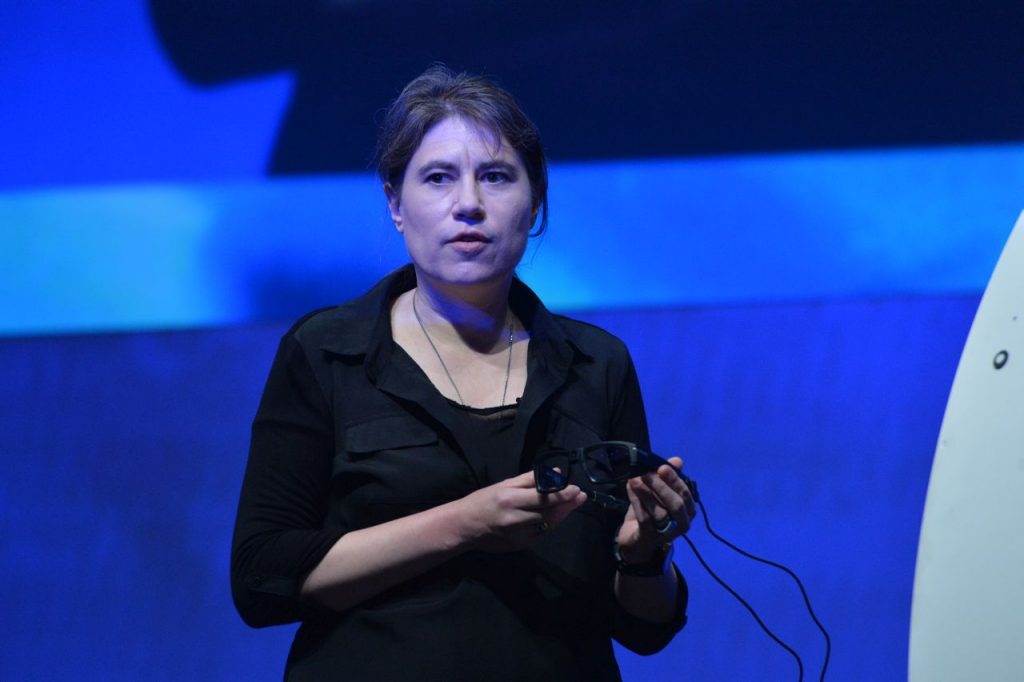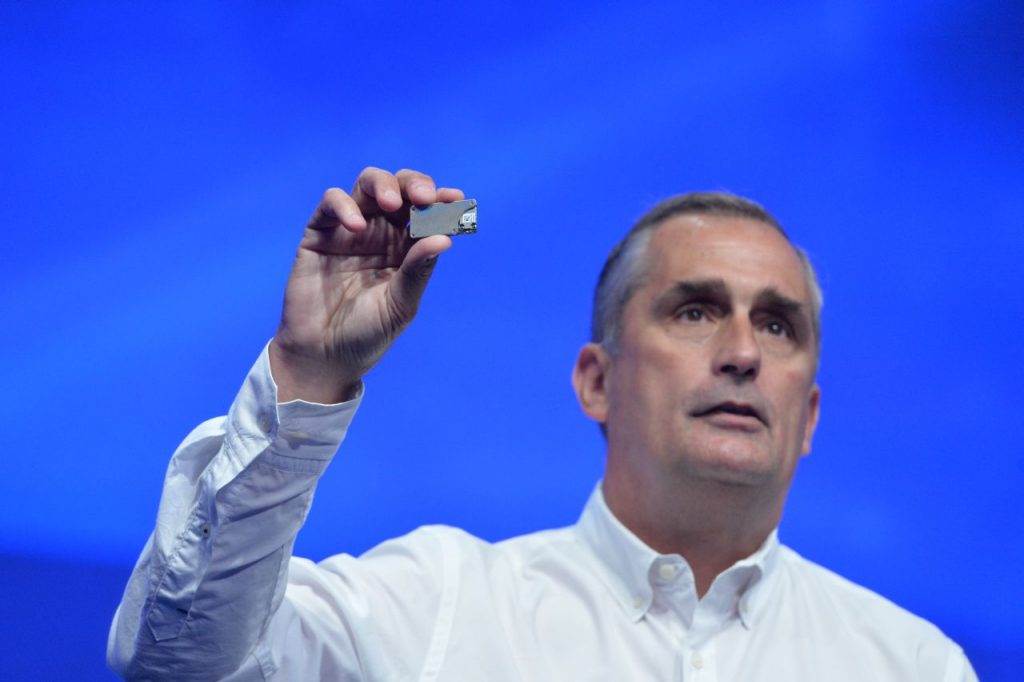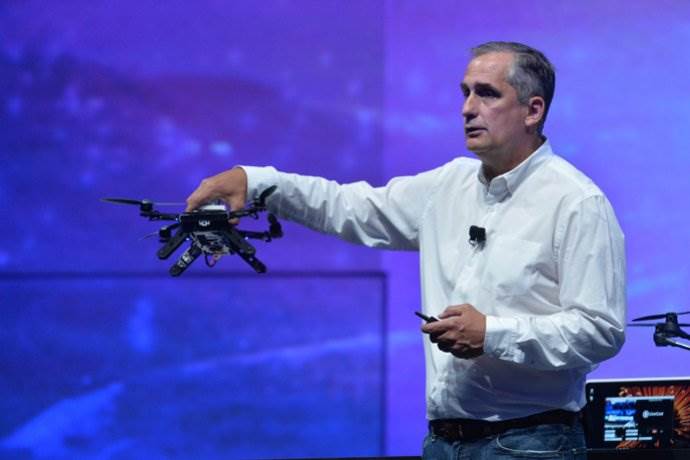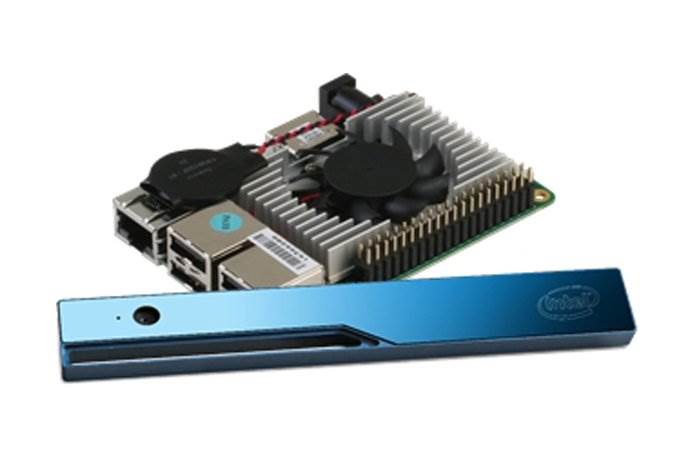The 2016 Intel Developer Forum (IDF) has kicked off in San Francisco. Intel CEO Brian Krzanich delivered a keynote address outlining the company’s ambitious vision of the future with an array of technologies, mostly aimed at developers, but also giving tech consumers an idea of some of the things they can expect to see in the near to not-so-near future.
The key theme was the vision of a ‘merged reality’. Quoting Krzanich: “Merged reality delivers virtual world experiences more dynamically and naturally than ever before – and makes experiences impossible in the real world now possible.”
Project Alloy
In an exciting announcement, Intel demonstrated their VR headset that will go head to head with the likes of the Oculus Rift and HTC Vive. One of the first things to note is that it is untethered. This is a key feature as the user will be able to more easily utilize 360 degree free range motion across a large space. Along with integrated collision detection and avoidance sensors (on the headset only, without any external sensor), the user will able to much more easily combine physical movements and the virtual space.
Intel says the hardware and API will be open to developers. allowing partners to use the Alloy design to create their own branded products with availability as soon as 2017. Expect much more news on this as the development progresses.
Intel Joule platform
The Internet of Things: that all seeing, all knowing network of items with embedded electronics that all communicate and plot humanity’s downfall (just kidding.. sort of..). There is no doubt that IoT is a major development as we move forward into an increasingly interlinked infrastructure.
Brian Krzanich introduced the Intel Joule compute module. This is a developer product with with an integrated depth sensing camera that is targeted at IoT developers and industry. It’s purpose is to accelerate the time it takes from concept to prototype. Krzanich talked about a French company called PivotHead, who have developed a set of glasses for Airbus. The glasses allow monitoring of the operator and help with real time quality control with audio feedback.


Other potential applications include robotic bartending, household robotics, medical applications and an interesting development for motorcycle police. In this case, the camera is able to autonomously read license plates and display information on a heads up display of a visor.
Yuneed Typhoon H drone
Drones (unmanned aerial vehicles) used to be restricted to the realms of the military, but these days can be bought by hobbyists from the local department store.
Intel showed their Yuneed Typhoon H drone, which is equipped with a camera that intelligently avoids objects and plots courses around them. This drone would be quite the companion technology for photographers and videographers. It is available for $1899 USD.

Intel also released a developer kit for UAV developers called Intel Aero. It incorporates hardware, software and communications that should allow for some interesting projects. Are the mailman’s and take away delivery driver’s days numbered? Amazon certainly have some grand plans for drone deliveries..
Intel Euclid Developer kit
The Euclid developer kit integrates sense, compute, and connect capabilities in an all-in-one candy bar size form-factor. This plug-and-play platform enables developers to create applications using Intel’s RealSense technology. It is aimed at researchers, makers and robotics developers.

Intel Custom Foundry
Intel is a world leader on semiconductor fabrication technology, often making the transition to smaller fabrication nodes years ahead of its competitors. On day one of IDF, Intel proudly talked about its 10nm FinFET process and a partnership with ARM to bring 10nm SoC’s to future mobile devices. LG was named as a 10nm customer, so we can expect to see the likes of Samsung and TSMC get some serious competition in the next couple of years.
Stay tuned as we bring you more from the Intel Developer Forum, which is currently underway in San Francisco from August 16th to 18th.
(Images credit: Intel Corporation)


![[World Alzheimer’s Day] Samsung Research Advances Early](https://loginby.com/itnews/wp-content/uploads/2025/09/1758375215_World-Alzheimer’s-Day-Samsung-Research-Advances-Early-238x178.jpg)




